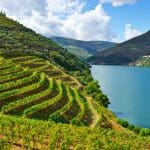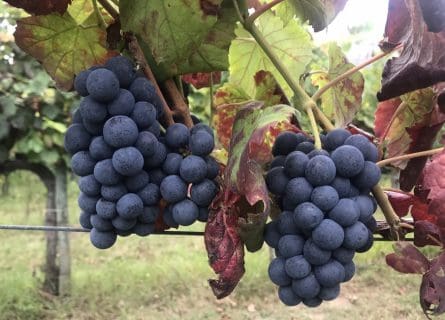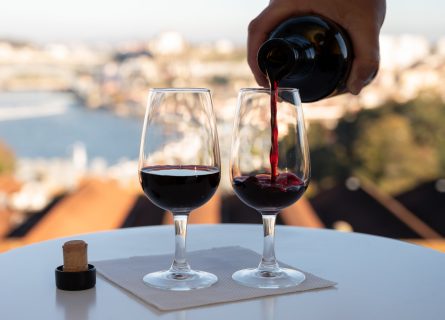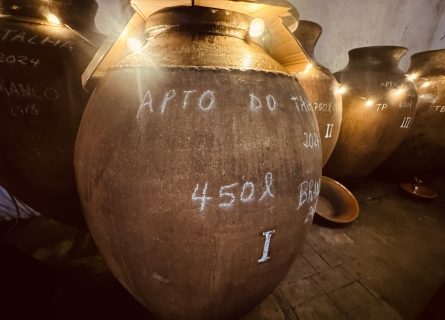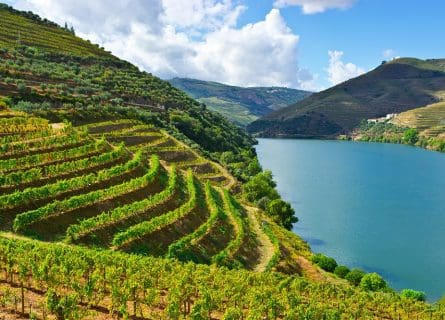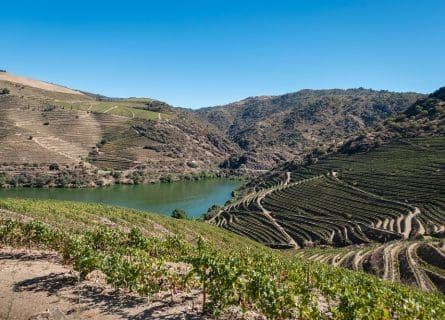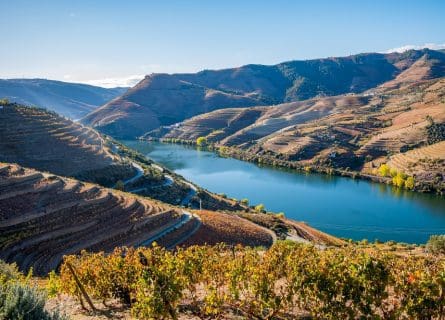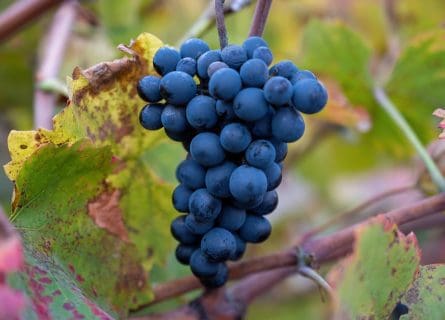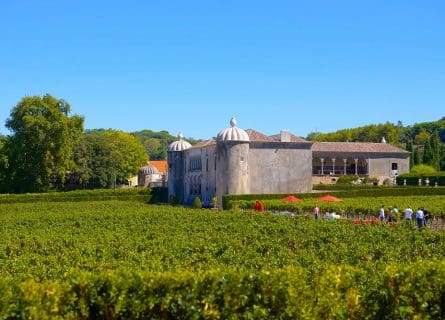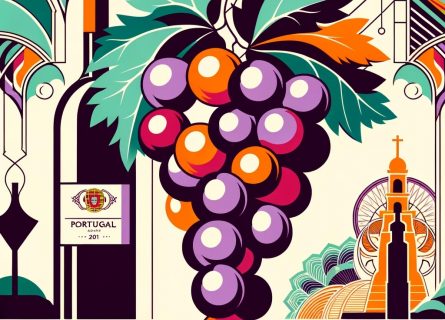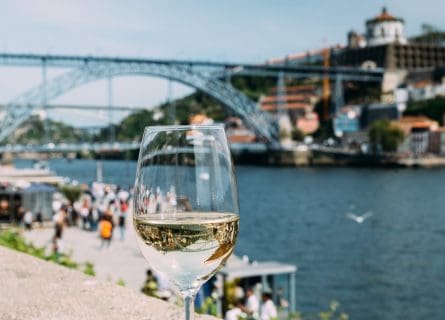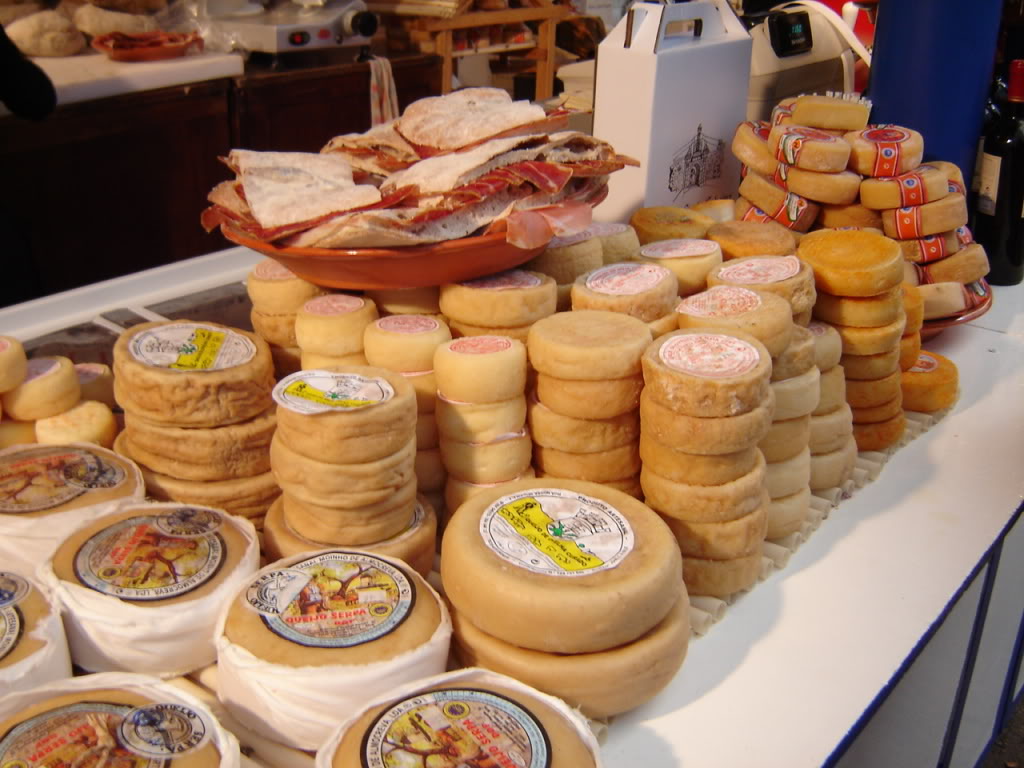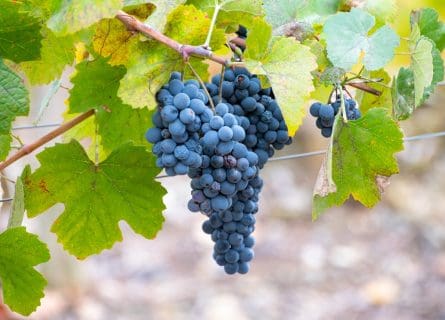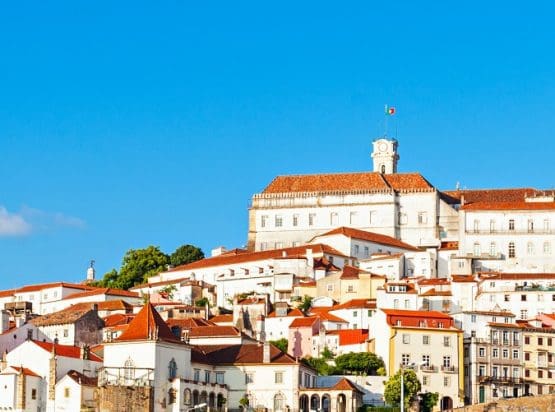
Aveiro Travel Guide
Experience the vibrant colors and flavors of Aveiro: Your ultimate guide to the Venice of Portugal.
One of northern Portugal’s best-kept secrets, Aveiro is a small city just 50 miles south of Porto. It lies on the mouth of an estuary, has a lagoon, is surrounded by a terrific coastline, and has a canal system dividing the quarters. Hence its common nickname, “Venice of Portugal,” water features one way or another here, and a popular way to see some of the sights is to ride on a Moliceiro boat along the canals. The moliceiros were previously used to collect seaweed and have been prettily restored and painted in bright colors. But probably the most eye-catching feature of this town is its varied architecture. The beautiful Portuguese “azulejo” (painted tiles) decorated the old train station, Misericórdia church, and the whimsical Art Nouveau period buildings along the main strip. Also, the cathedral and the colorfully painted fisherman cottages at Costa Nova (so cute they look like toy houses) are just some of the architectural highlights.
From Fishing to Royalty
Aveiro has historically always been associated with fishing and sea trade. However, it grew and benefited immensely from the Discoveries era, bringing merchants and explorers from Europe to its port. The city was also a favorite place for monarchs, namely Princess Joana (daughter of King Afonso); she entered the Dominican Convent in Aveiro, having lost her succession to the throne after the birth of her younger brother John. The Monastery of Jesus has since been converted into a beautiful museum; besides the richly decorated tomb of Joana, the museum has an impressive collection of paintings from the 10th to 15th centuries.
Unfortunately, Aveiro also suffered terrible times and a period of extreme hardship after the tragedy of 1575, when a combination of silt build-up in the river and a horrendous storm caused the collapse of the port, which in turn cut the lagoon off from the tide and turned it into a swamp. As a result, diseases breed and spread like wildfire, devastating the population.
Salt and Seaweed
The city eventually recovered, and what had been the source of such ruin for years, the lagoon provided two profitable industries: salt production and seaweed harvesting. The salt was used for the Atlantic Northwest Cod Fishery, and the kelp was used as a natural fertilizer. Both industries are still actively exploited today.
-

Delicious Ovos Moles Wine and Gastronomy
Naturally, fresh fish and shellfish can be found in abundance here. Aveiro has an additional source for its aquatic delicacies, eels from the nearby rivers and lakes are a particular favorite in the region, served as stews and casseroles. Look out for “caldeirada de enguias” (eel stew). “Feijoada de búzios” is another local choice dish, a hearty bean stew with sea snails, as is “Arroz de marisco” (seafood rice).
You must try the “Ovos Moles” for something sweet, made from eggs and sugar; people flock from far and wide to purchase them from the Aveiro pastry shop.
Discover Bairrada’s Robust Reds
Bairrada is the neighboring wine region that produces robust reds predominantly from the Baga variety. High acidity and sturdy tannins mean these wines need time to evolve before drinking. Nevertheless, some exceptional sparkling wines come from this region; DOC Bairrada Espumante is responsible for over half the Portuguese sparkling wine production. Several varieties are permitted, both native (Fernão Pires, Baga, Arinto, Bical…) and international, particularly Chardonnay. Here, the high acidity of the wines produced is perfect for sparkling wine production, and the traditional secondary fermentation in the bottle method is used. Over the Serra DO Caramulo mountains is the Dão region with its exceptional dry wines, both red and white. Porto is also on the doorstep, just an hour’s drive north.
Nearby Wine Regions
-
 Unveiling Bairrada's wine revival: elegant reds with a Burgundy touch and captivating whites like Bical. Plan your trip now! Read more
Unveiling Bairrada's wine revival: elegant reds with a Burgundy touch and captivating whites like Bical. Plan your trip now! Read more -
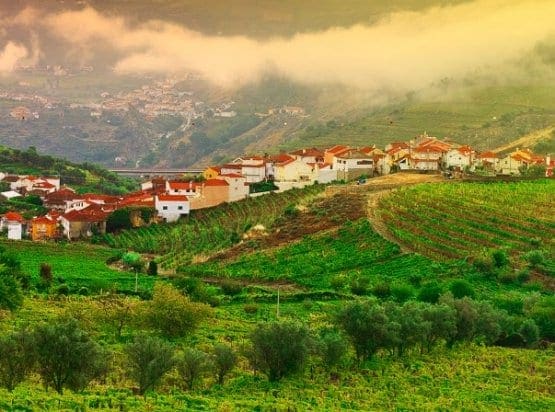 Indulge in the rich and diverse flavors of the Dão wine region. Discover the vineyards and wineries with our ultimate guide. Plan your visit now! Read more
Indulge in the rich and diverse flavors of the Dão wine region. Discover the vineyards and wineries with our ultimate guide. Plan your visit now! Read more -
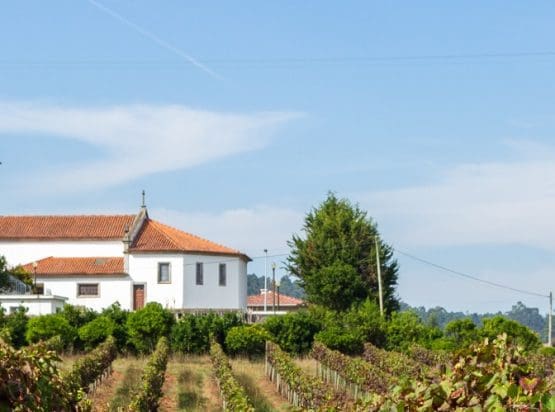 Uncover the beauty and richness of Portugal's Minho wine region. Discover the best wineries and vineyards that make this region unique. Plan your trip now! Read more
Uncover the beauty and richness of Portugal's Minho wine region. Discover the best wineries and vineyards that make this region unique. Plan your trip now! Read more -
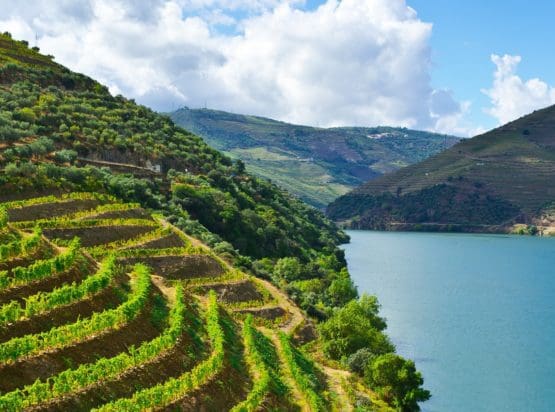 Explore the stunning Douro Valley wine region and taste some of Portugal's finest wines. Plan your trip today! Read more
Explore the stunning Douro Valley wine region and taste some of Portugal's finest wines. Plan your trip today! Read more
Highlights
-
Take a “Moliceiro” boat ride on the canal
Traditionally used for collecting seaweed, which was, in turn, used as the local fertilizer. Now restored and painted in vibrant colors, the Moliceiro boats are a relaxing way to take in some of the city’s main sights.
-
Beaches and the photogenic Costa Nova
Barra and Costa Nova beaches are lovely for a spot of sunbathing, but also where some of the best seafood restaurants can be found. Costa Nova is where you will find the brightly painted fishermen houses.
-
St. Domingo Cathedral
A striking example of Portugal’s religious heritage, dating back to the 15th century, when it was a Dominican Convent. Both Gothic and Baroque influences can be seen from the various restorations over the centuries.
-
Ovos Moles
Pop into Aveiro Pastry shop for a box of the local sweet “Ovos Moles”, from egg and sugar, they are a popular treat.
-
Home of Vista Alegre
Just a couple of miles down the road in Ilhavo you can visit the Vista Alegre Museum. Discover what inspired the designs behind this emblematic brand and the inspiring relationship between the founding Pinto Basto family and its workers.
Recommended for you
More information
If you would like us to customize an exclusive luxury tour, contact us and let us know your travel plans. We offer luxury food and wine tours for private groups of a minimum two guests. In addition, all of our private, chauffeured tours are available year-round upon request.

